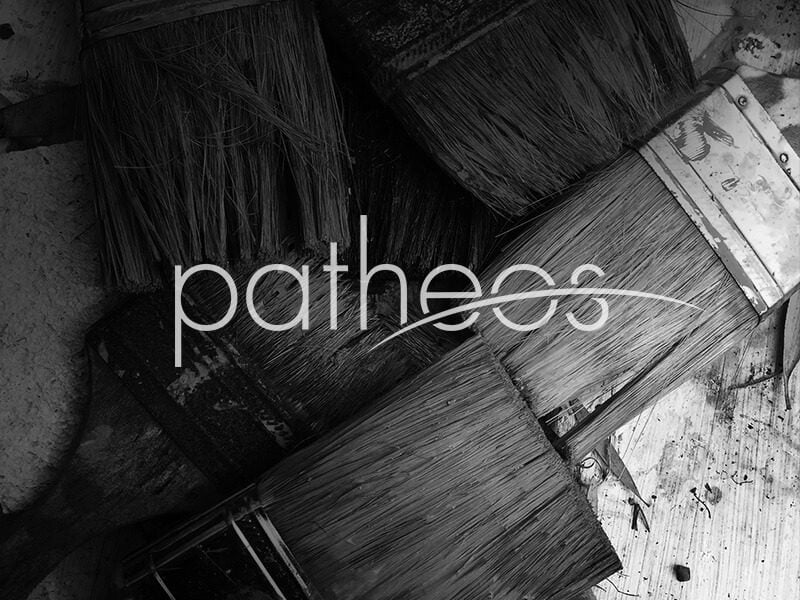Following the Arizona Cardinals can feel like an endless meditation on the vanity of human desire. Still, it amazes me that Super Bowl XLIII, where Pittsburgh snatched the cup from our hands in the game’s final minute, had the roundabout effect of screwing me tighter into my faith.
The Paraclete’s proxy in this case was a friend of mine, a woman predictably named Mary. Mary is a very good and faithful Catholic, which is to say she can turn any conversation to the subject of abortion. I discovered this the day after the game, when I happened to say something nice about Faith Hill, who’d sung “America the Beautiful” before kickoff. “Having eyes, see ye not?” quoted Mary. “That woman is a Botox Frankenstein! The skin on her face might look fresh and tight, but she has wattles like John McCain’s!”
To Mary’s way of thinking, Hill’s nips, tucks, and injections were natural corollaries of her pro-choice views. Recalling that the singer’s biological mother had put her up for adoption, she said, “Faith Hill gets to be born, but nobody else does! Everyone else ages, but she doesn’t have to!” Pausing to harumph, Mary added, “Now, take St. Bernadette — that’s my idea of graceful aging.”
Finding out what the hell Mary was talking about introduced me to the Incorruptibles. Because I live in Phoenix, where they happen to be thin on the ground, I made their acquaintance through YouTube, where pilgrims and enthusiasts have put up some impressive slide shows. The paradox of long-dead bodies looking lifelike, humbly garbed in religious habits and often barefoot, yet pompously displayed in crystal urns under heraldic insignia, captivated me to the point of obsession.
The promise of eternal life had always sounded fine in principle, or else I’d never have put on the smock and climbed into the font the previous Easter. But the promise of eternally looking good grabbed me right in the gut. In those days, I spent three hours every day at the gym — 90 minutes before work, and 90 minutes after. Two or three times each week, I’d wake up to find my right shoulder, which I’d dislocated playing lacrosse and done no favors to as a U.S. Airways ramp agent, out of joint. Grunting, I’d roll back and forth in bed until it found its way back in. Then I’d go right back to doing military press with a 65-lb dumbbell in each hand. Pitched as the ultimate spa treatment, sanctity was so much easier a sell.
Then, in my frenzied research, I learned that Bernadette’s face and hands had gotten a light mask, courtesy of a prominent Parisian waxworks firm. St. Catherine Laboure’s body, though found whole and entire nearly 60 years after the saint’s death, had taken a dose of glycerine. Some of the snappiest-looking specimens, including the U.S.’s own Mother Cabrini and St. John Neumann, had been extensively rebuilt. I took the news with all the outrage of a misled consumer. The so-called Incorruptibles, tangible reminders of the resurrection of the body (and the life of the world to come), came by their looks no more honestly than Faith Hill, her own sinful self.
This revelation did nothing to uncouple my notion of sanctity from my ideal of spryness. At the time, I was attending the most youthful parish in the Valley. The place had an historic connection to Arizona State University, and drew some faculty members, along with some of my fellow alumni. That suited me fine. But students outnumbered the lot of us like Zulus outnumbered Welshmen at Rourke’s Drift. They had the look of people who had never been kicked in the groin by life, and more importantly, the look of people who had never been called upon to kick anyone else. In a word, they looked angelic, and some part of me was sure I’d make it to heaven — if I made it at all — right after they’d all decided the place was no longer cool.
That year, Ash Wednesday fell on February 17. For reasons I can no longer recall, I ended up going to Mass at a distant parish — St. Joseph’s, on the Phoenix-Paradise Valley border. I quickly discovered I was the youngest person there by 30 years, the next-youngest being a caregiver to someone who looked 20 her own senior. (Arizona is one of God’s waiting rooms; note the ages in the Republic’s obituary section, and you’ll think you’re reading the Book of Genesis.) Before producing the ashes, the priest said something that shocked me. He said, “For some of you, I know, this Ash Wednesday will be the last.”
These grim words caused no ripple that I could see. Instead, in a businesslike and well-practiced fashion, the crowd struggled to its feet. Leaning on canes or walkers or their pews or each other — I offered my arm a couple of times — the ancients queued up in the aisles and tottered forward. With their wrinkles and liver spots, their scalps shining through wispy hair and their flesh drooping off sharp bone, they formed a dance of the almost-dead. Rasping out the formula about returning to dust in a Bostonian basso, the nearest altar server — himself 75 if he was a day — sounded like the very Angel of Death.
But he made such a nice Angel of Death, this guy, a considerate and respectful Angel of Death. Leaning forward to daub foreheads, he wore a sunburst of a smile. And his clients smiled back — just as eagerly, it seemed, as newborns receiving their first splash of holy water.
Pope Benedict has called old age a gift from God, and he’d definitely know. I’m not sure whether that’s quite the message I got that Ash Wednesday, four years ago. But the sight of those retirees creaking toward the altar, and toward their own ends, with such saintly resignation did plant the seed of the notion that there are other, perhaps better, role models than Dorian Gray.
Did the seed fall on rock? Gee whiz, I hope not. I still go through gym rat phases, but my ambitions are a little more modest. Like Toby Keith, I recognize that I’m not as good as I once was, and never will be again. My shoulder joint thanks me. As for the Incorruptibles, I don’t think much about ’em anymore. St. Thomas Aquinas said we’d all end up looking agile and glorious on the Day of Judgment, and I’ll just have to take his word.
One good thing did, however, come from that brief preoccupation: I started writing. Something about my cyber-odyssey through the realm of the dead planted me before my keyboard with more purpose than I’d known since dropping out of ASU’s journalism grad program. To my great surprise and delight, the editor of an online Catholic magazine liked my 3,300-word sprawl enough to buy it. He did order me to cut the thing by about two-thirds, but now I understand why: life’s too short.











